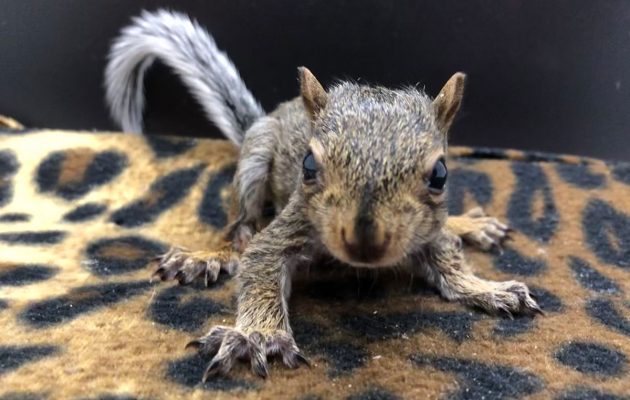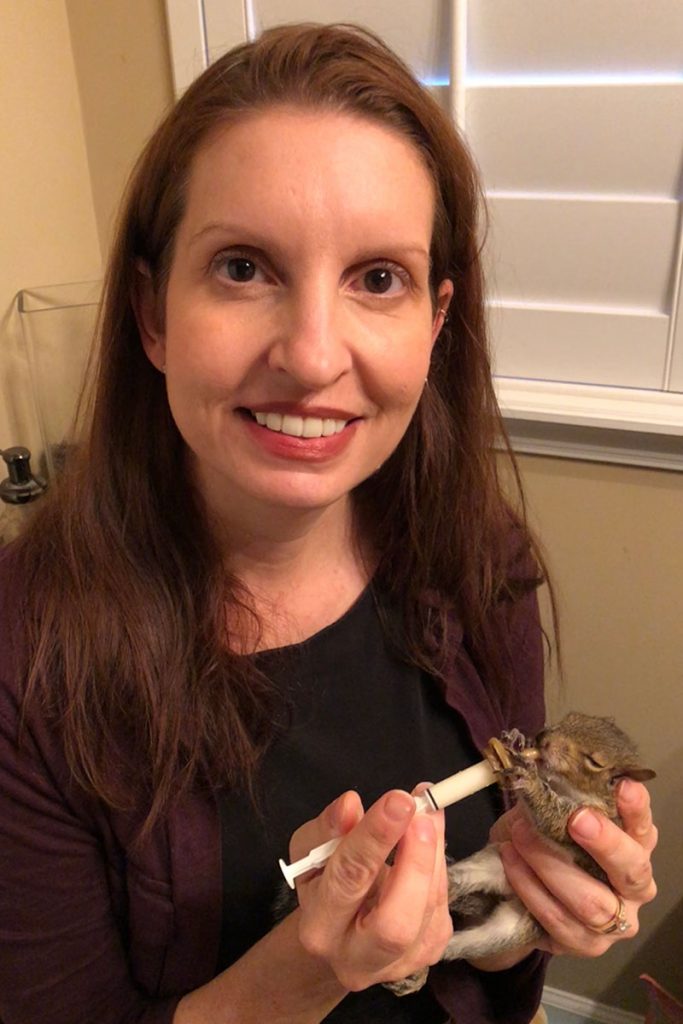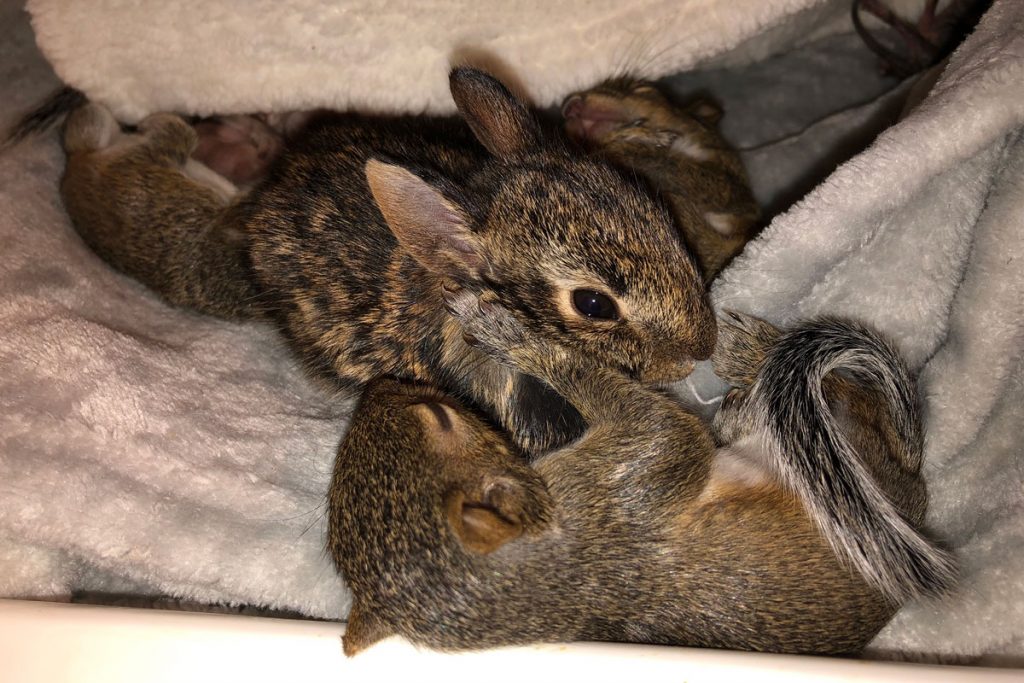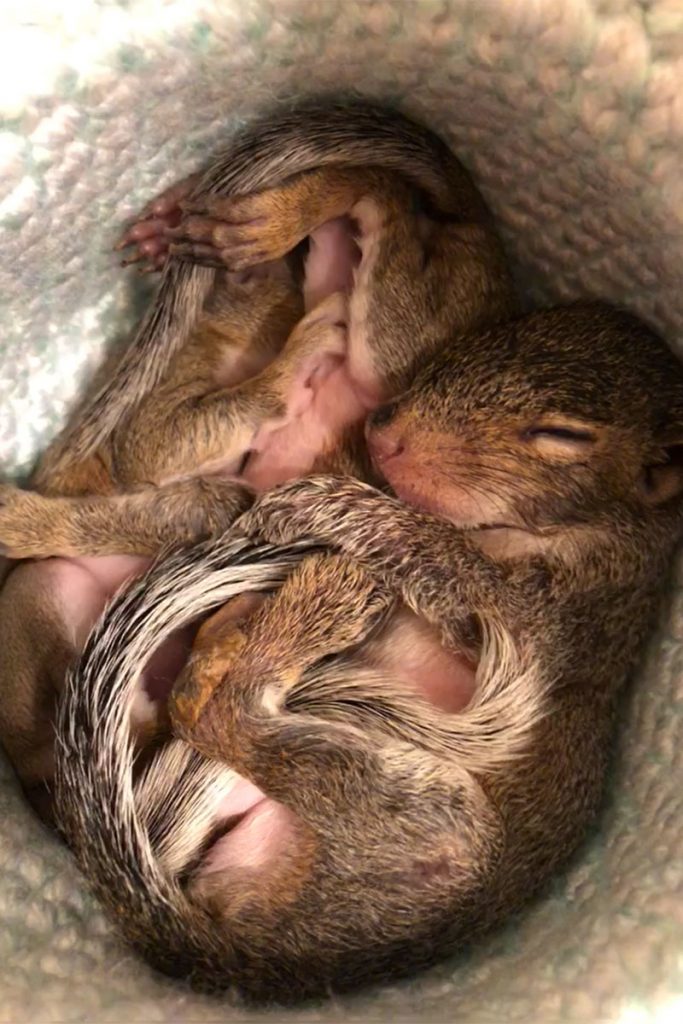Animal House: Wildlife Babies May Not Need Help

The first impulse at the sight of a tiny baby bird, squirrel, flying squirrel, raccoon, possum or rabbit alone on its own, may be to scoop it up away from danger and rush to a wildlife rescue. Wildlife experts say that healthy wild babies old enough to be on their own, must be allowed to learn to forage and live independently despite the risks.
All rescue organizations are overwhelmed every Spring with orphaned, ill or injured babies unable to survive without around-the-clock care. Forced to ration limited resources and staff, they beg the public to leave healthy wild babies in the wild.
A cell phone photo of any wild baby can easily be sent to a wildlife rescue for help determining age or medical condition if necessary. There is also basic advice regarding how to determine if a wild baby actually needs help.
First, evaluate the baby for injury or illness and notice the safety of its location. If the baby is in danger, relocate to a safer area away from sidewalks, playgrounds or streets. Protect babies from ground predators or raptors and other birds who attack from above. If it’s a baby bird, wait until it can fly to safety. If it’s a squirrel (Eastern Gray, Southern Flying or Sherman’s Fox), raccoon, possum (Virginia Possum), or rabbit (Marsh or Eastern Cottontail), wait until it can climb shrubs, a tree or disappear into cover.
While it is true that those first hours and days are the most dangerous for newly independent wild babies, bird and squirrel parents are ferociously protective and continue to care for and feed their newly independent offspring. In those cases, babies need to remain close enough for parents to hear their calls and find them.

Sometimes baby birds or squirrels still too young to survive on their own are accidentally expelled from nests by siblings, storms, wind, tree-trimming or cutting. According to Desiree Pinder, founder of Hotel for Squirrels Wildlife Rescue, babies in these situations must be quickly reunited with parents.
This can be done by playing a recording of baby squirrel cries, Pinder said. Her organization recorded baby squirrel calls and put the recording on You Tube. It can be found online at Youtube.babysquirrelcall=orphanGPS. The recording should be played – loudly – on a cell phone speaker left close to the baby squirrel. If a parent hears the cries, it will quickly retrieve its baby. Take care to deter predators who may respond to the sounds. If no parent retrieves the infant squirrel within an hour or two, it does not move to trees or cover and seems too young, consult wildlife rescue.
Wild babies may appear too young for independence, when they actually are old enough. Eastern Gray Squirrels open their eyes at four weeks. At ten-twelve weeks they are weaned, fully furred with bushy tails, able to leave the nest and forage. If they do not voluntarily leave home, mom hoists them out.
If a healthy baby bird is found on the ground, locate its nest in nearby shrubs or trees and return the baby bird. If the nest was damaged, collect and reassemble any pieces. If no nest can be found, substitute a small wicker or berry basket. Fill the basket with dry leaf litter, plant fluff or twigs, (nothing treated with pesticides), straw, feathers, moss or pine needles. Avoid synthetic or non-biodegradable material.
Carefully tuck the baby into the new nest. Secure the nest to the closest tree, on a sturdy branch at least eight to ten feet above ground to thwart ground-dwelling predators. Secure the basket with wire or zip ties. If no parent returns to feed the baby bird within an hour or two, contact wildlife rescue.
There are visible ways to determine if a baby bird is healthy and old enough for independence. Hatchlings are completely helpless baby birds, eyes tightly closed and no feathers. Nestlings are older with some feathers, but remain unable to fend for themselves. Hatchlings and nestlings must be cared for by parents or they will die of dehydration, cold, exposure to the elements or be eaten by predators. Fledglings are fully feathered baby birds that walk, hop, flutter, test their wings and learn to fly within a week.
Raccoons are attentive, protective parents who wean babies at twelve weeks and painstakingly teach them survival skills. Baby raccoons forage by five months and by ten months are independent. They may stay with mom for a year: unusual among wildlife. Offspring often build nearby dens and choose to live in family groups. Vanderbilt University researchers describe raccoons as among the most intelligent mammals.
Virginia possums are North America’s only marsupials, with a pouch on the female’s belly where she carries and nurses undeveloped babies. Possums are excellent mothers while nursing babies, but once babies leave the pouch at the age of two to three months, and climb onto mom’s back for travel, everything changes. If a baby possum falls off or becomes separated, they are usually left behind.
Baby possums are weaned and forage at three to five months, when they become independent. If a possum’s body, not including the tail, is at least eight inches long, it is old enough to live independently.
“Possums are animals that have changed little over tens of millions of years,” according to National Geographic researcher Nizar Ibrahim, a paleontologist at the University of Chicago. One reason for their evolutionary survival? These omnivores will eat almost anything, not just plants and other animals, which is why they have survived since the dinosaur era.
Despite a somewhat negative public image, possums are among the most valuable mammals in nature. Their natural immunity to snake venom allows them to kill venomous snakes. Researchers around the world are working to understand their unique body chemistry, in order to create an antivenom to prevent snake bite deaths worldwide, according to the National Institutes of Health.
Possums also ravenously devour thousands of ticks, fighting the spread of Lyme Disease. They eat many pests in the garden and landscape, including small rodents and rotten fruit fallen from trees.

Both Marsh and Eastern Cottontail rabbit mothers differ because of their acute sense of smell, extreme high-stress level and negative reaction to human scent. They are quick to panic and abandon litters if disturbed by loud noises like a lawn mower or even an animal passing too close by. Babies are weaned, foraging and independent at four to five weeks. Cottontails are larger, with white, powder-puff tails. Marsh rabbits are darker with a barely visible tail.
How can the regular observer determine if a wild baby needs medical help? In all wildlife interactions, it is safest to wear gloves. If no gloves are available, disinfect hands. Birds do not have a strong sense of smell, with the exception of vultures and it is a myth that birds reject babies touched by humans.
First, notice if there is any obvious sign of distress or injury on the bird or mammal. Look for blood, discharge from nose or mouth, body wounds, shaking or shivering, open-mouth breathing, coldness, limping, inability to hold the head or body upright or stand. Are there wet feathers or fur, lacerations or holes, drooping limbs, uneven wings? These are all signs that the baby has been picked up, mouthed, chewed or bitten by another animal.
If a wildlife baby has visible flies, maggots or other insects, it cannot be returned to the nest or left on its own. It must receive immediate medical attention. Birds and squirrels often reject babies that are cold or have injuries. Cold babies must be warmed before reuniting families, (see sidebar Warming Methods).
If there are signs of distress or injury, the bird or mammal should be quickly transported to licensed Florida wildlife rescuers for medical evaluation and care. To safely transport, use a box lined with a soft pillowcase or towel. Never pet or hold the baby, or attempt to give food or water. Place the baby gently into the box. Close and secure all sides. Place in a quiet, warm spot away from rain, direct sun or cold drafts. Protect the box from disturbance of any kind or rough handling. Wild babies cannot maintain body temperature and must be kept warm, (see sidebar). Place any warming device under the towel and not against baby’s skin, feathers or fur.
Hotel for Squirrels, an all-volunteer non-profit, rescues and rehabilitates orphaned or injured small Florida mammals for release back to the wild. Visit their website for information, to volunteer, donate and see needed items list. Free volunteer training and student community service hours available.

Warming Methods
- Heating pad on low under half of box/container
- Sock filled with uncooked, dry rice microwaved for one minute
- Plastic bottle filled with hot water
- Snuggle Safe microwaveable, cloth-covered, pet-safe disks retain heat for hours and can be purchased online.
Resources
Hotel for Squirrels
www.hotelforsquirrels.org
(904) 343-5554
REimagineD – Cottage #10
Bayard Village
12561 Philips Hwy.
Youtube.babysquirrelcall=orphanGPS: recorded baby squirrel calls.
www.orphanedwildlifecare.com/raccooncare
Animal Help Now
www.ahnow.org to find local wildlife help based upon zip code.
By Julie Kerns Garmendia
Resident Community News







